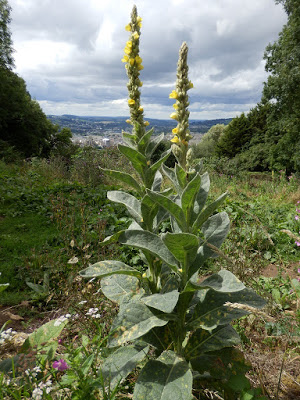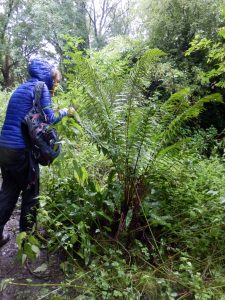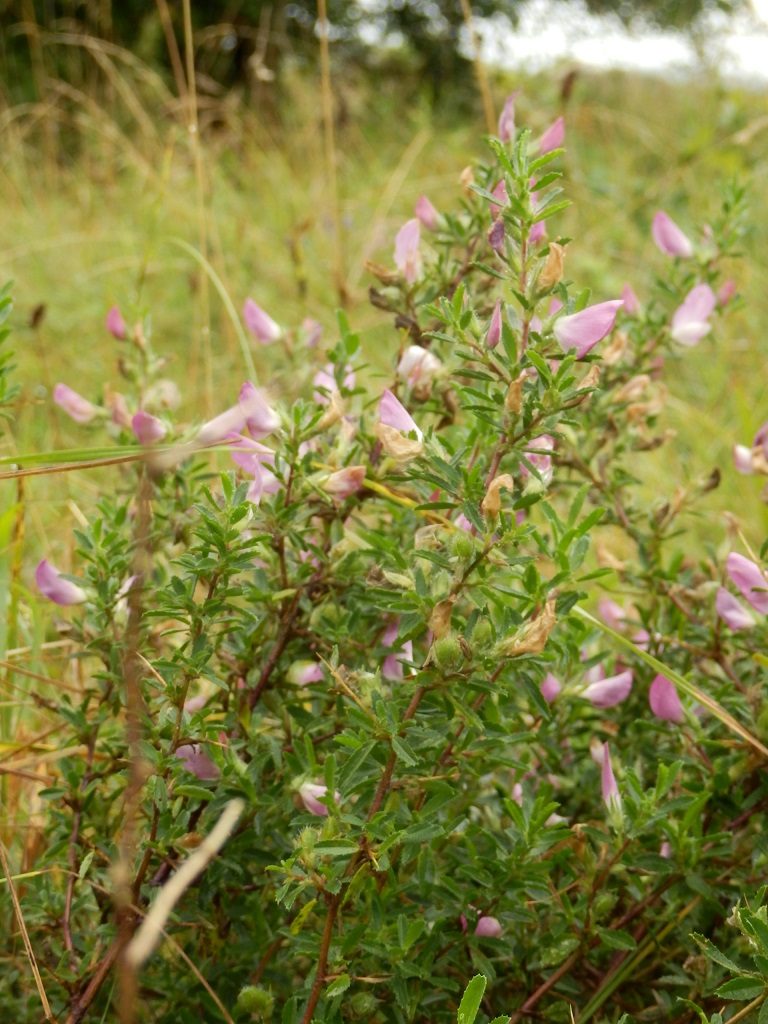Just four of us gathered for this meeting on a damp but by no means impossibly wet morning. After slowly climbing up the short, steep hillside from North Road, we entered the deep dark woodland along the skyline path beside Bathampton Warren and enjoyed the abundance of shade-loving plants growing there, which included a head-high outburst of Scaly Male-fern (Dryopteris affinis) as well as a variety of common bryophytes. Amongst several wood-inhabiting fungi present were some groups of Dead Man’s Fingers (Xylaria polymorpha) and a pair of Velvet Shields (Pluteus umbrosus).
Emerging out of the woodland into calcareous grassland we stopped to inspect and identify the numerous lichens and bryophytes growing at a convenient height on an overhanging tree branch. Close examination of an ant-mound near the TV masts revealed a few shoots of the uncommon Rose-moss (Rhodobryum roseum) which is characteristic of this habitat. Walking across the grassland towards Bathampton Wood, we enjoyed the fine displays of numerous Woolly Thistles (Cirsium eriophorum) in full flower, even though these lacked the abundance of attendant bees and butterflies that would have been present in sunnier conditions.

Great Mullein (© Marion Rayner)
On the golf course, we came across a pile of sawdust on which troops of Grey Ink-caps (Coprinopsis cinerea) were fruiting, surrounded by cut logs inhabited by several bracket and crust fungi including the uncommon Splitgill (Schizophyllum commune). Descending the hillside back towards Sham Castle we came across a fine patch of species-rich grassland with abundant Small Scabious (Scabiosa columbaria) and Spiny Restharrow (Ononis spinosa), and at the top of the clearance just below the folly were some fine plants of Great Mullein (Verbascum Thapsus). Overall this was an enjoyable multi-interest circular walk with excellent views.
Alan and Marion Rayner

Scaly Male-fern (© Marion Rayner)

Spiny Restharrow (© Marion Rayner)

Recent Comments